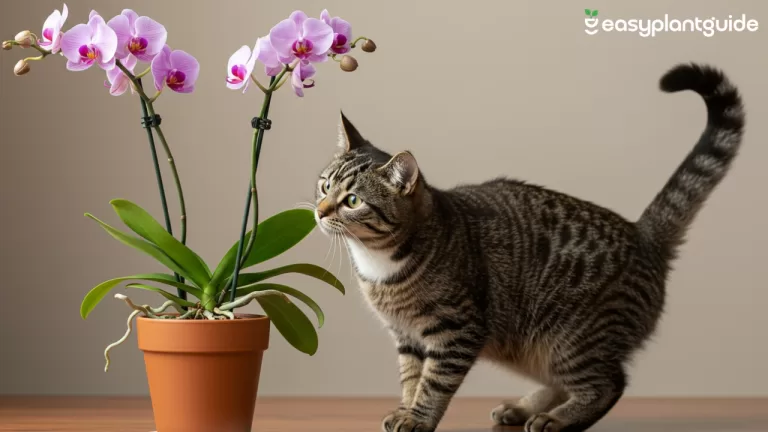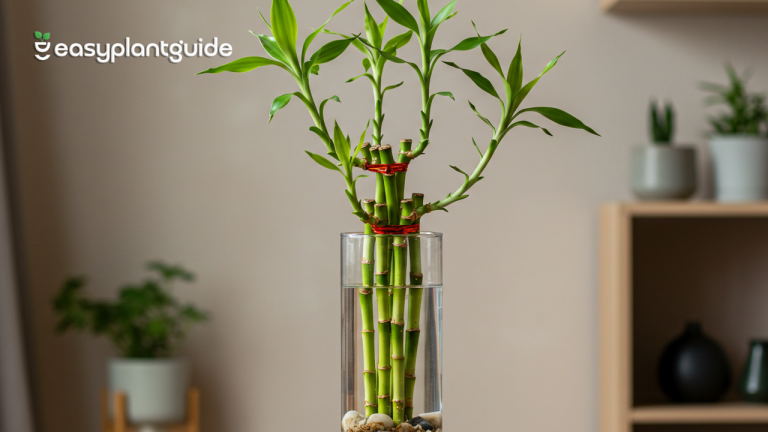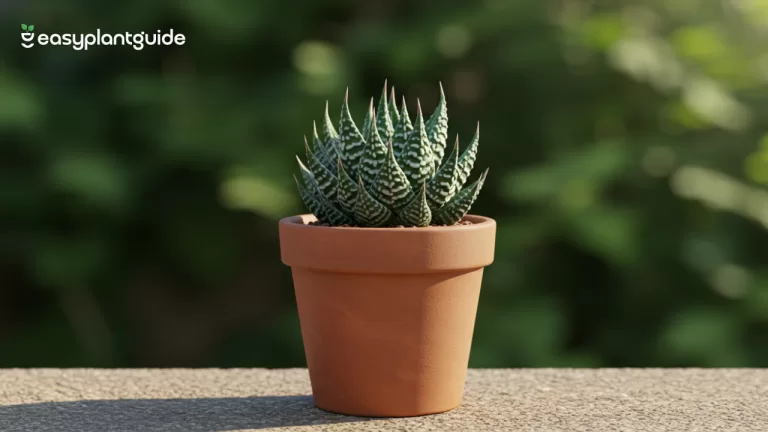Planting Foliage Plant : 10 Powerful Secrets
Foliage plants are the unsung heroes of every home and garden. They may not bloom like roses or orchids, but their lush green leaves bring unmatched freshness and serenity to any space. Whether it’s the glossy leaves of pothos, the dramatic shape of monstera, or the velvety texture of calatheas, these plants add life and calmness wherever they grow. If you’re looking to start your journey into planting foliage, you’re in for a treat! Let’s dive into the essential secrets to help your green friends grow healthy, vibrant, and long-lasting.
Why Choose Foliage Plants for Your Space
Ever wondered why Planting foliage plants have become so popular lately? It’s not just about aesthetics—there’s real science behind their charm. Foliage plants purify the air, reduce stress, and even improve concentration. Their greenery connects us with nature, helping us feel more relaxed in our busy lives. They also fit into any decor style, from minimalist to tropical, making them a perfect choice for homes, offices, and even patios. Simply put, foliage plants are nature’s air filters and mood boosters wrapped in green beauty.
Understanding the Basics of Foliage Planting
Before you start planting, it’s important to understand what foliage plants need to thrive. These plants rely on proper light, soil, water, and temperature balance. Planting Foliage plants don’t all have the same needs—some prefer shade, while others love sunlight. Likewise, soil type and watering habits vary by species. Think of each plant as having its own personality—you just have to learn what makes it happy. Once you master these basics, you’ll notice your plants rewarding you with fuller, shinier leaves and steady growth.
Best Light Conditions for Foliage Plants
Light is like food for plants—it fuels photosynthesis and overall growth. Most foliage plants prefer bright but indirect sunlight because harsh rays can scorch their delicate leaves. However, some species like snake plants or ZZ plants can tolerate low-light conditions. Always place your foliage near windows filtered with sheer curtains or in a bright corner. Rotate the pots occasionally to ensure even growth on all sides. If your room doesn’t get much natural light, consider using LED grow lights to keep your plants glowing year-round.
Light Tips for Healthy Growth:
- Avoid exposing Planting foliage to direct sun for long hours.
- Use sheer curtains to filter sunlight.
- Rotate plants once a week for even light.
- Clean dusty leaves to maximize light absorption.
- Use artificial lights if sunlight is limited.
The Perfect Soil Mix for Planting Foliage
Foliage plants thrive in well-draining, nutrient-rich soil. A perfect soil mix holds moisture but doesn’t let roots sit in water. Adding materials like coco peat, perlite, and compost creates a light and airy texture, helping roots breathe freely. Compact or clay-heavy soil suffocates the plant and leads to root rot. Remember, healthy roots mean healthy Planting foliage—so always focus on soil quality before anything else.
| Soil Component | Purpose | Ideal Ratio |
| Coco Peat | Retains moisture | 40% |
| Perlite | Improves drainage | 30% |
| Garden Soil | Provides structure | 20% |
| Compost | Adds nutrients | 10% |
Watering the Right Way – Not Too Much, Not Too Little
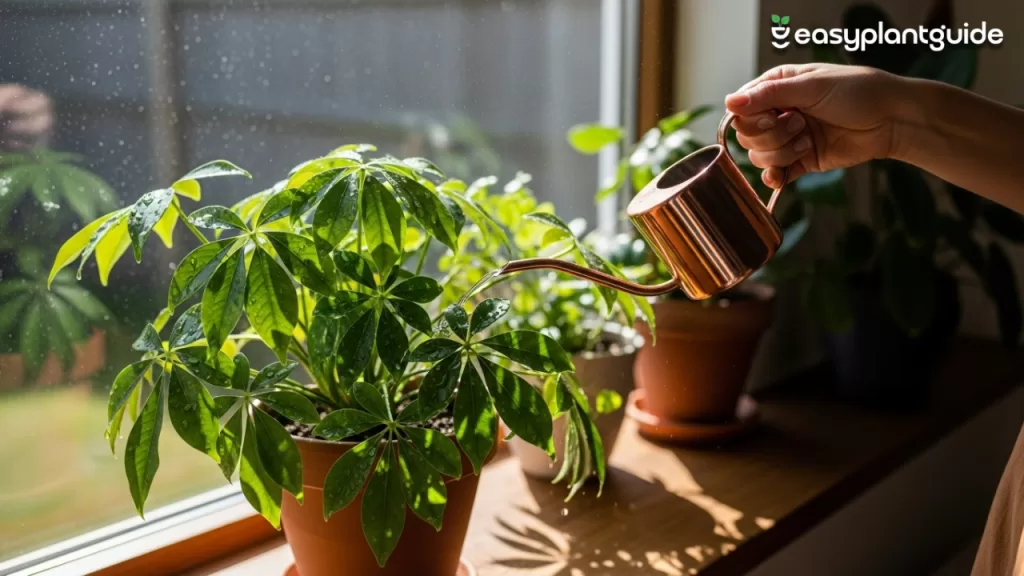
If there’s one thing that can make or break your Planting foliage plants, it’s watering. Overwatering suffocates roots, while underwatering dehydrates them. The trick is to water only when the top inch of soil feels dry. Always check moisture with your fingers before pouring water. Pots should have drainage holes to prevent standing water. Use room-temperature water and avoid watering on cloudy days when evaporation is low. Remember, consistency is key—regular, moderate watering keeps your foliage lush and happy.
Temperature and Humidity – The Comfort Zone for Foliage
Most Planting foliage plants come from tropical regions, which means they love warm, humid environments. Ideal temperatures range from 65°F to 85°F (18°C–29°C). Low humidity can cause leaf edges to brown, so maintaining moisture in the air is essential. You can mist your plants regularly, use a humidifier, or place a water tray nearby. Avoid placing your plants near fans, air conditioners, or heaters—they dry the air and harm delicate foliage. Keeping your environment stable ensures healthy, shiny leaves all year long.
Fertilizing – Feeding Your Green Companions
Just like humans need nutrition, foliage plants require nutrients for lush growth. Use a balanced liquid fertilizer every 4–6 weeks during the growing season (spring and summer). Fertilizers containing nitrogen, phosphorus, and potassium work best for leaf development. Avoid overfertilizing, as it can burn roots and damage foliage. In winter, reduce feeding since most plants go dormant. Organic options like compost tea or worm castings are gentle and effective alternatives that enhance soil quality over time.
Fertilizing Tips:
- Fertilize only during active growth seasons.
- Always dilute fertilizer before applying.
- Flush soil occasionally to remove salt buildup.
- Avoid fertilizing stressed or newly repotted plants.
- Choose organic fertilizers for long-term soil health.
Pruning and Grooming – Keeping Foliage Flawless
Pruning is like giving your plant a haircut—it promotes healthier growth and keeps it looking tidy. Regularly trim yellow, damaged, or overgrown leaves to redirect energy to new shoots. Wipe leaves with a damp cloth to remove dust and let them breathe. This not only improves appearance but also enhances photosynthesis. For larger plants like monstera or philodendron, prune older stems to encourage fuller growth. Pruning during spring or early summer gives your plants the best chance to recover quickly and grow beautifully.
Propagation – Multiply Your Green Family
Want more plants without spending extra money? Propagation is the answer! Most Planting foliage plants can be propagated through stem cuttings or division. Simply cut a stem with at least one node and place it in water until roots appear. Once the roots are about 2 inches long, transfer them into a pot with fresh soil. For bushy plants like ferns, divide the root ball and replant each section separately. Propagation is easy, fun, and a great way to share your love of greenery with friends and family.
Common Problems and How to Fix Them
Even the healthiest Planting foliage plants face issues occasionally—but don’t panic! Most problems are easy to fix once identified. Yellow leaves often mean overwatering, while brown tips indicate low humidity. Pests like aphids, mealybugs, or spider mites can attack leaves but are easily controlled using neem oil sprays or soapy water. Keep an eye out for droopy leaves—they’re usually a sign of underwatering or sudden temperature changes. Quick diagnosis and gentle care can bring your plants back to perfect health in no time.
Container Selection
Your pot isn’t just a container—it’s your plant’s home. Choose one with good drainage holes and a size suitable for root growth. Plastic pots are lightweight and retain moisture longer, while clay pots are breathable and reduce overwatering risks. For aesthetic appeal, decorative planters can be used as outer covers. Always repot your plants every 2–3 years or when roots start crowding the pot. The right container keeps roots comfortable, ensuring your Planting foliage stays strong and green.
Outdoor vs. Indoor Foliage – Key Differences
When it comes to planting foliage, location matters. Indoor plants like pothos or snake plants prefer indirect light and controlled environments. Outdoor foliage such as crotons or coleus enjoy direct sunlight and open air. The main difference lies in humidity, watering frequency, and pest exposure. Always research your plant’s specific needs before deciding where to grow it. Whether inside or outside, understanding their ideal surroundings ensures your foliage plants flourish beautifully in any space.
The Beauty and Versatility of Foliage Plants
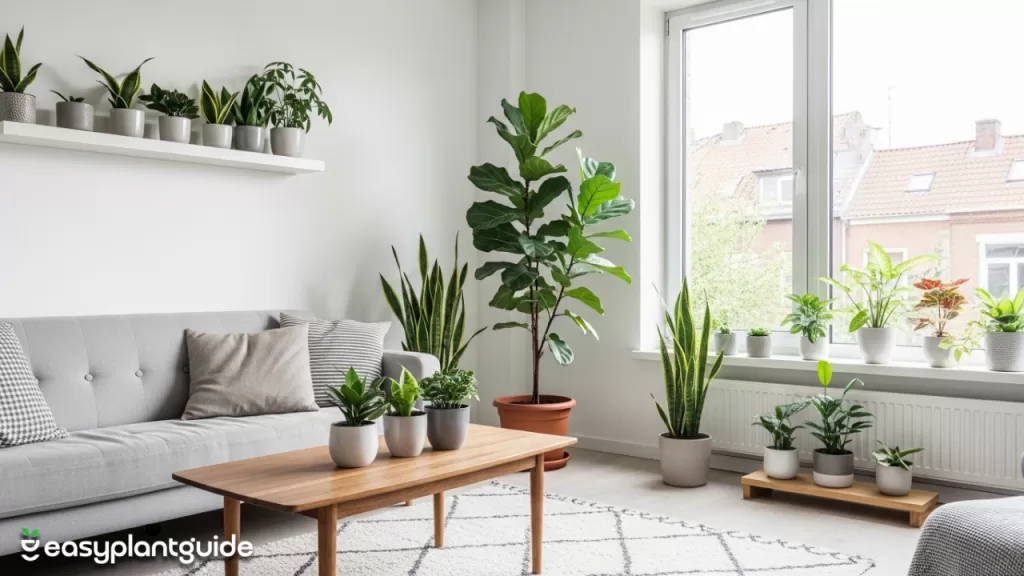
Foliage plants are the heart of any indoor or outdoor garden. Their lush leaves, diverse shapes, and rich shades of green bring life to every corner. Unlike flowering plants, foliage plants stay attractive year-round, making them perfect for long-lasting décor. Whether you choose ferns, pothos, or calatheas, these plants not only purify the air but also create a peaceful, refreshing environment that uplifts your mood and adds natural beauty to your space.
Choosing the Perfect Foliage Plant for Your Space
planting foliage plant depends on light, humidity, and personal style. For bright areas, opt for monstera or philodendron; for shaded corners, go with ferns or snake plants. Compact options like pothos or ZZ plants fit perfectly in small rooms or offices. Think about maintenance too—some plants thrive with minimal care, while others need more attention. The right foliage plant can completely transform your home’s atmosphere effortlessly.
Essential Care Tips for Healthy Foliage Growth
To keep planting foliage plants thriving, provide indirect sunlight, well-draining soil, and moderate watering. Overwatering is a common mistake—always let the top inch of soil dry first. Regularly wipe the leaves to remove dust, ensuring better photosynthesis. Mist occasionally to boost humidity, especially during dry seasons. Fertilize monthly during active growth for greener leaves. With these simple steps, your foliage plants will reward you with lush, vibrant growth and long-lasting charm.
Seasonal Care Tips for Foliage Plants
Each season brings new challenges for plant parents. In summer, focus on watering and humidity; in winter, protect plants from cold drafts. Spring is ideal for repotting and fertilizing, while autumn requires cutting back on water and light exposure. Observing your plant’s response to seasonal changes helps you adjust care routines easily. Consistency throughout the year results in stable, vibrant growth.
Seasonal Care Checklist:
- Water more often in summer.
- Repot during spring for fresh growth.
- Reduce watering in winter months.
- Keep humidity stable year-round.
- Monitor temperature fluctuations carefully.
Designing a Foliage Garden – Add Green Life Everywhere
A well-planned Planting foliage garden can transform your home into a peaceful oasis. Mix plants with different textures and leaf patterns for a visually stunning effect. Large-leaved plants like monstera make excellent focal points, while smaller ones like ferns or pothos fill the gaps beautifully. You can create vertical gardens, hanging pots, or terrariums to save space. Don’t hesitate to experiment—foliage plants are flexible, forgiving, and always ready to bring your design vision to life.
Conclusion
Planting foliage isn’t just about growing plants—it’s about creating life and energy around you. Every green leaf reflects your effort, care, and connection to nature. Whether you’re a beginner or a seasoned gardener, these tips will help you build a space that feels alive and refreshing. With the right balance of light, water, and love, your foliage plants will flourish beyond expectations. So roll up your sleeves, grab your gardening gloves, and let your green journey begin today. After all, happiness truly grows where your foliage thrives!
Checkout for more blogs here.


